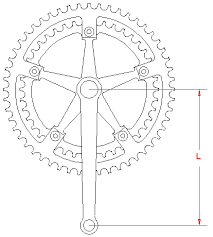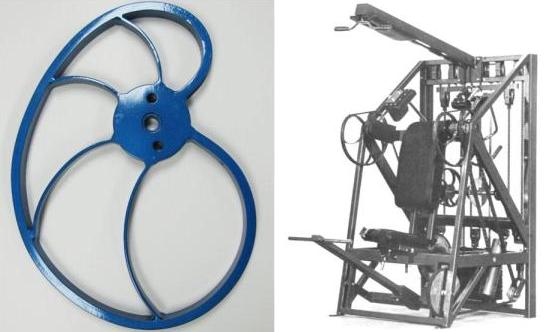
There has been a bit of lab research on the topic of crank length. During the initial study, max power was measured and it was found that there was no difference in max power output between 145 to 195mm crank lengths. However, what was noted is that shorter crank lengths required less oxygen uptake. In other words, they were more efficient.
In the next phase of the study, efficiency was measured. Cyclists used crank lengths of 145, 170, 195mm and pedaled at 40, 60, 80, and 100rpm, at an intensity of 30, 60, and 90 percent of blood lactate threshold. The results showed that oxygen uptake increases as pedal rate increases. To be clear here, pedal rate is not the same as cadence. With pedal rate, the farther out from the crank axis the pedal is, the faster the crank has to move to complete one full rotation. Think of your bike wheel – the rim is moving much faster than the hub in order for both to complete one full revolution at the same time. Hence, the cyclists’ foot speed is faster when pedaling the 195mm cranks than the 170mm or 145mm cranks.
Most report that when they switch to a shorter crank, their cadence increases. The thought here is that the increase in cadence when moving to a shorter crank length isn’t due to trying to make up for the lack of leverage, but to replicate the pedal rate an athlete is accustomed to when using a longer crank and to use the extra available O2, which is minimal.
Leverage is another factor to consider. Crank length is only one lever in a series of levers on your bike (wheels, front chain ring, and rear cassette). We can change both the front and rear cassette on the fly by shifting gears. Looking at the lever system this way demonstrates how small changes in crank length have minimal impact on the available leverage in this system.
So how to determine what length is best? While there is certainly an aspect of “what works best for me isn’t necessarily what’s best for you,” I’ll argue that the evidence to-date points to everyone leveraging cranks that are too long. Shortening your crank from 175mm to 172.5mm is not how “shortening the crank length” is define. Rather, if you use a 175mm crank, then shortening it to 165 or 160 is what would be a material change in crank length.
Due to tradition and consumer availability, it would be difficult finding a bike in your size equipped with significantly shorter cranks. These shorter crank lengths are not widely avaiable options even though science would support that it would not impact a rider’s power output or efficiency and, in fact, could very well enhance both. And, thus, shorter crank lengths could make athletes faster on a bike.
In my estimation, this is one of those “zig, zag” moments – when everyone is zigging, my first inclination is to zag. Conventional wisdom isn’t necessarily correct. It can be frustrating to know that there are many available crank options that would work for an athlete. As stated above, deciding between a 175 and 172.5mm crank is a waste of time as there is too small of a difference to matter. An athlete should take the time to test different crank arm lengths in a bike shop, if at all possible. If not, maybe take a leap of faith.
Cranks arms are the lengths they are because that’s the way it’s always been. That doesn’t make today’s choices right. The evidence points to significantly shorter cranks being more efficient in that the body processes less precious oxygen at a given power output or speed. So, why wouldn’t we try to buck the status quo, shorten our cranks and quite possibly race faster?
Happy Training,
Coach Nate


 RSS Feed
RSS Feed